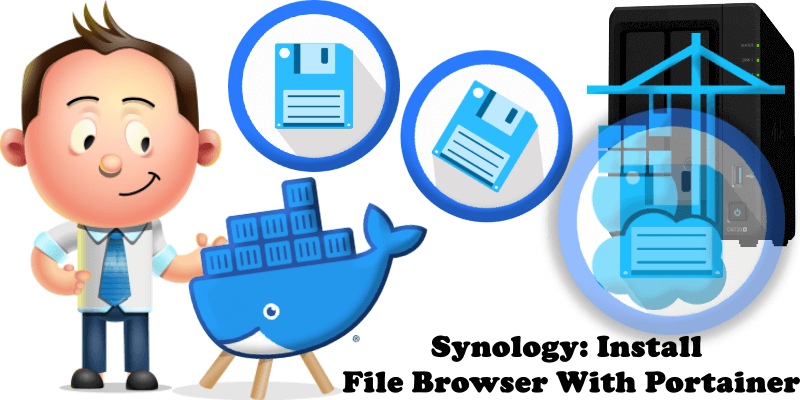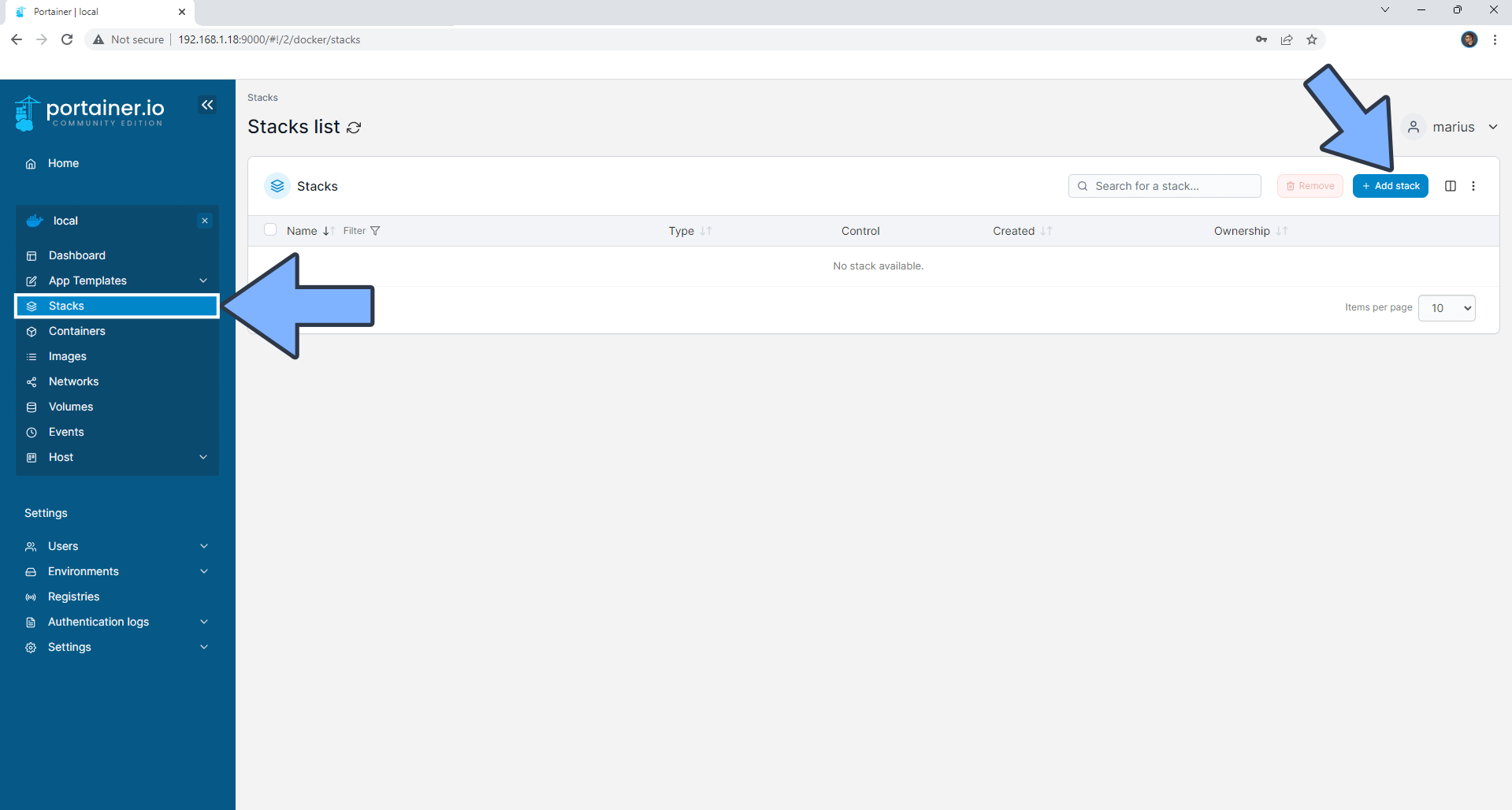
My previous guide for File Browser involved the use of Task Scheduler. Today I’m offering a recommended and excellent alternative for installing the latest File Browser version via Portainer. File Browser offers a user-friendly interface for managing files within a designated directory. It supports uploading, deleting, previewing, renaming, and editing files. The app allows the creation of multiple user accounts, each with its own dedicated directory. File Browser can function as a standalone application or as middleware for seamless integration. In this step by step guide I will show you how to install File Browser on your Synology NAS using Docker & Portainer.
STEP 1
Please Support My work by Making a Donation.
STEP 2
Install Portainer using my step by step guide. If you already have Portainer installed on your Synology NAS, skip this STEP. Attention: Make sure you have installed the latest Portainer version.
STEP 3
Go to File Station and open the docker folder. Inside the docker folder, create one new folders and name it filebrowser. Follow the instructions in the image below.
Note: Be careful to enter only lowercase, not uppercase letters.

STEP 4
Now create two new folders inside the filebrowser folder that you have previously created at STEP 3, and name them config and database. Follow the instructions in the image below.
Note: Be careful to enter only lowercase, not uppercase letters.

STEP 5
Inside the database folder that you have previously created at STEP 4, upload the filebrowser.db file below. Download it from the blue button below then upload it into your database folder. Follow the instructions in the image below. 🔒Note: Support my work to unlock the password. You can use this password to download any file on mariushosting forever!

STEP 6
Log into Portainer using your username and password. On the left sidebar in Portainer, click on Stacks then + Add stack. Follow the instructions in the image below.

STEP 7
In the Name field type in filebrowser. Follow the instructions in the image below.
services:
filebrowser:
container_name: File-Browser
image: filebrowser/filebrowser
user: 0:0
healthcheck:
test: curl -f http://localhost:80/ || exit 1
mem_limit: 6g
cpu_shares: 768
security_opt:
- no-new-privileges:true
restart: on-failure:5
ports:
- 8147:80
volumes:
- /volume1:/srv
- /volume1/docker/filebrowser/database/filebrowser.db:/database/filebrowser.db:rw
- /volume1/docker/filebrowser/config:/config:rw

STEP 8
Scroll down on the page until you see a button named Deploy the stack. Click on it. Follow the instructions in the image below. The installation process can take up to a few minutes. It will depend on your Internet speed connection.

STEP 9
If everything goes right, you will see the following message at the top right of your screen: “Success Stack successfully deployed“.

STEP 10
Go back to STEP 1 or you will deal with karma 🙂
STEP 11
On the left sidebar in Portainer, click Containers. Identify your File-Browser instance, then click on the little log icon. Follow the instructions in the image below.

STEP 12
Copy your own random admin password. You will need this password later at STEP 13. Follow the instructions in the image below.

STEP 13
The installation process can take up to a few seconds/minutes. It will depend on your Internet speed connection. Now open your browser and type in http://Synology-ip-address:8147 Type in the default username and password, then click Login. Follow the instructions in the image below.

STEP 14
Your File Browser dashboard at a glance!

Enjoy File Browser!
If you encounter issues by using this container, make sure to check out the Common Docker issues article.
Note: If you want to run the File Browser container over HTTPS, check How to Run Docker Containers Over HTTPS. In order to make File Browser work via HTTPS, it’s mandatory to activate WebSocket.
Note: Can I run Docker on my Synology NAS? See the supported models.
Note: How to Back Up Docker Containers on your Synology NAS.
Note: Find out how to update the File Browser container with the latest image.
Note: How to Free Disk Space on Your NAS if You Run Docker.
Note: How to Schedule Start & Stop For Docker Containers.
Note: How to Activate Email Notifications.
Note: How to Add Access Control Profile on Your NAS.
Note: How to Change Docker Containers Restart Policy.
Note: How to Use Docker Containers With VPN.
Note: Convert Docker Run Into Docker Compose.
Note: How to Clean Docker.
Note: How to Clean Docker Automatically.
Note: Best Practices When Using Docker and DDNS.
Note: Some Docker Containers Need WebSocket.
Note: Find out the Best NAS Models For Docker.
Note: Activate Gmail SMTP For Docker Containers.
This post was updated on Wednesday / June 25th, 2025 at 3:43 PM
